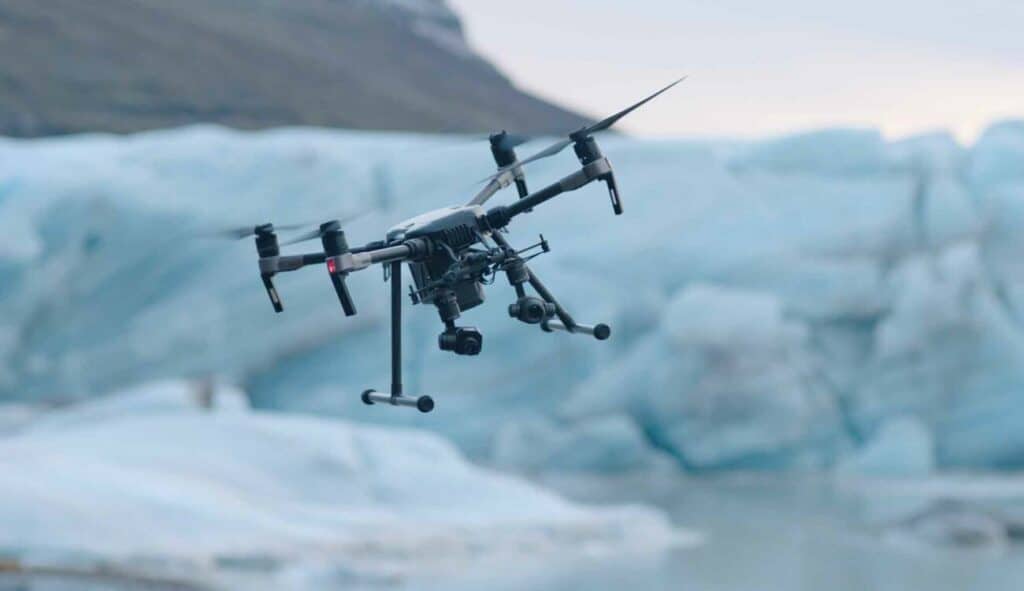
Flying a drone in the winter is a bit different from any other time of year. In some places, this means flying your drone in snow, in other places it just means cold weather drones are needed. However, there are steps that you can take no matter what the weather is like to improve your drone flying in winter. Here are six drone flying tips to help you manage a flying drone in winter.
1. Do Not Fly In Active Snow
Avoid flying when it is actively snowing. While snowflakes are delicate, they can interfere with your drone. Whether your drone is moving at high speed or trying to hover, impacting snow can cause damage. In many cases, it can slow the rotation of the blades, which can bring your drone down. To avoid problems, avoid areas where it is actively snowing.
2. Always Have a Clean Place to Land
Your drone is not made to land in snow, mud, water, or ice. Before you take off, always have a clean place to land. This keeps your drone clean and also keeps it from being damaged on landing. For example landing on wet ground can splash mud on it, scratching a camera lens or making the blades less efficient. Over time, little problems like this will
3. Watch the Temperature
Drones have a set operating temperature. For example, the DJI M300 RTK has an operating range of -20 degrees to 50 degrees Celsius (-4 degrees to 122 degrees Fahrenheit). If the temperature drops below that range, the M300 RTk can experience problems that will knock it out of the sky.
It’s important to remember the weather and the altitude as well. Your drone experiences different temperature conditions based on where it is, which is usually colder since it is at a higher altitude and moving quickly. Take this into account to make sure that you don’t accidentally send it into an area where it is too cold to operate.
4. Expect Lower Battery Life
Extreme temperatures can reduce your drone’s battery life. If it is colder outside, that could mean that the blades may not turn as smoothly. To compensate, the motors may push a bit harder and use powerless efficiently. This means it will run out of power sooner.
Cold weather can make it difficult for batteries to stay charged and work efficiently. Plan for this when planning your flights. Make sure you get back to the landing spot early so that you don’t lose your drone mid-flight.
5. Clean Your Drone After Every Flight
Cold weather can mean that your drone picks up dirt easily. The cold seems to make it stick to the surface of your drone as it flies or lands. Before you put it in the case, clean it thoroughly. A simple wipe down for the body and cleaning with the right tools for the camera lenses is all that it needs. You want to make sure that any dirt that is stuck to it is wiped away so that it does not get into the seams or into the case. This can keep your drone looking new for longer since it will prevent buildup and scratches across the surface.
6. If You Are Unsure, Don’t Fly
If there is anything about your flight that you are unsure of, don’t fly. Winter can mean difficult conditions for your drone to handle. You don’t want to lose it in flight due to unexpected conditions. If there is a reason for you to be concerned that you may not be able to finish a flight safely, it is better to wait until conditions change.
Find the Right Drone
There are many drones that are designed to fly in the winter. At NOAR Technologies, we can help you find the right drone for any job. Contact us at (248) 906-2375 to discuss your needs so that we can find the right drone for you.
Original Source: https://www.noartechnologies.com/6-tips-for-flying-your-drone-in-winter/





